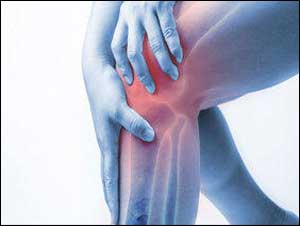- Home
- Editorial
- News
- Practice Guidelines
- Anesthesiology Guidelines
- Cancer Guidelines
- Cardiac Sciences Guidelines
- Critical Care Guidelines
- Dentistry Guidelines
- Dermatology Guidelines
- Diabetes and Endo Guidelines
- Diagnostics Guidelines
- ENT Guidelines
- Featured Practice Guidelines
- Gastroenterology Guidelines
- Geriatrics Guidelines
- Medicine Guidelines
- Nephrology Guidelines
- Neurosciences Guidelines
- Obs and Gynae Guidelines
- Ophthalmology Guidelines
- Orthopaedics Guidelines
- Paediatrics Guidelines
- Psychiatry Guidelines
- Pulmonology Guidelines
- Radiology Guidelines
- Surgery Guidelines
- Urology Guidelines
MRI based 3D model may predict osteoarthritis risk in knee injury patients

Delhi: A recent study has reported a new method to predict osteoarthritis (OA) risk in patients with knee joint injuries.
In the study, published in the journal Clinical Biomechanics, the researchers demonstrated an MRI scans based virtual 3D models of the knee following rupture of anterior cruciate ligament (ACL), was able to predict osteoarthritis risk by revealing the regions more likely to develop OA.
ACL tear is one of the common injuries of the knee joint for athletes. It is generally repaired through surgical reconstruction. However, in many cases, the initial injury could lead to cartilage damage eventually leading to reduced mobility, osteoarthritis, and joint pain.
Currently, there are several techniques that can predict the susceptibility of parts of knee joints for future osteoarthritis after ligament rupture. But most of these are either too convoluted for clinical use or provide insufficient information.
In the study by Paul O. Bolcos, University of Eastern Finland, Kuopio, Finland, and colleagues explored the possibility of using simplified computational modelling to assess osteoarthritis risk after knee joint injuries.
For the purpose, they acquired MRI scans and motion capture data of two patients who underwent ACL reconstruction surgery. These scans and data were then used to generate virtual 3D models of the patients' knee joints.
A series of the mathematical equation were applied to these models allowing them to stimulate nee joint movement and also recognize potential anatomical changes after the application of varying amounts of force. The simulations highlighted areas in the knee joints of the patients that were most susceptible to cartilage degeneration and collagen damage.
Also Read: Thiazides use increases risk of knee replacement surgery in osteoarthritis patients
Key findings include:
- In the first patient, for example, the modelling technique revealed that roughly 14% of the lateral tibial cartilage and 7% of the lateral femoral cartilage were likely to degenerate over the course of several years.
- For the second patient, the model predicted collagen damage and cartilage degeneration in the medial tibial and femoral cartilage, as well as in the posterior side of the medial joint, but not in the lateral tibial and femoral cartilage.
- These predictions held up when compared with structural and compositional changes in the patients' knee joints noted on follow-up MRI scans taken three years after surgery.
Also Read: Use opioids cautiously for short duration in osteoarthritis
"Our results suggest that a relatively simple finite element model, in terms of geometry, motion and materials, can identify areas susceptible to osteoarthritis, in line with measured changes in the knee joint from MRI," Bolcos said. "Such methods would be particularly useful in assessing the effect of surgical interventions or in evaluating nonsurgical management options for avoiding or delaying osteoarthritis onset and/or progression."
The modelling technique could provide a pathway to patient-specific clinical evaluation of osteoarthritis risks in those with ACL tears and indicate optimal rehab protocols," concluded the authors.
To read the complete study follow the link: https://doi.org/10.1016/j.clinbiomech.2019.08.004

Disclaimer: This site is primarily intended for healthcare professionals. Any content/information on this website does not replace the advice of medical and/or health professionals and should not be construed as medical/diagnostic advice/endorsement or prescription. Use of this site is subject to our terms of use, privacy policy, advertisement policy. © 2020 Minerva Medical Treatment Pvt Ltd